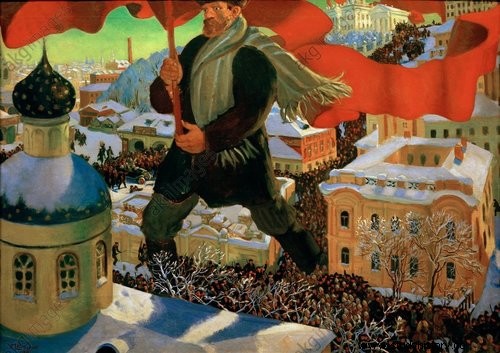 Boris Kustodiev, The Bolshevik, 1920
Boris Kustodiev, The Bolshevik, 1920
January 22, 1905, Red Sunday, marked the end of Tsarism. While demonstrators come to ask for help from Nicolas II, like "children before their beloved father", his uncle, who replaces the tsar that day, sees a revolted crowd who is angry with the tsar and the autocracy. We shoot at demonstrators, we shoot at women and children. It was twelve years later, when Lenin returned, that Nicolas II understood that the strength of the people was stronger than his own. He abdicated on March 3, 1917:Lenin and Trotsky then organized the October Revolution.
Representation of the Bolshevik appeared on European streets in 1920, three years before Tsar Nicholas II abdicated and the October Revolution led by Lenin brought the Bolsheviks to power. The autocracy dies with the tsar in 1918. Nicolas II is assassinated on July 17, 1918. He remains the last tsar of Russia, and his death marks the end of tsarism. But after the creation of the Soviet Union, the Leninists seek to spread their new doctrine in Europe (and even in the world) so that no social class remains.
In 1915, Lenin and Trotsky met in Zimmerwald and wrote a manifesto there accusing capitalism of having caused the war which had lasted for almost a year. But it was especially in 1917 that Bolshevism became a threat to other nations. Trotsky then creates the Red Army, which will oppose the White Army made up of anti-revolutionaries, as well as all the countries which consider Bolshevism as a danger.
The fall of Tsarism will influence other countries such as Hungary, Austria and Italy, which will move closer to a socialist system.
